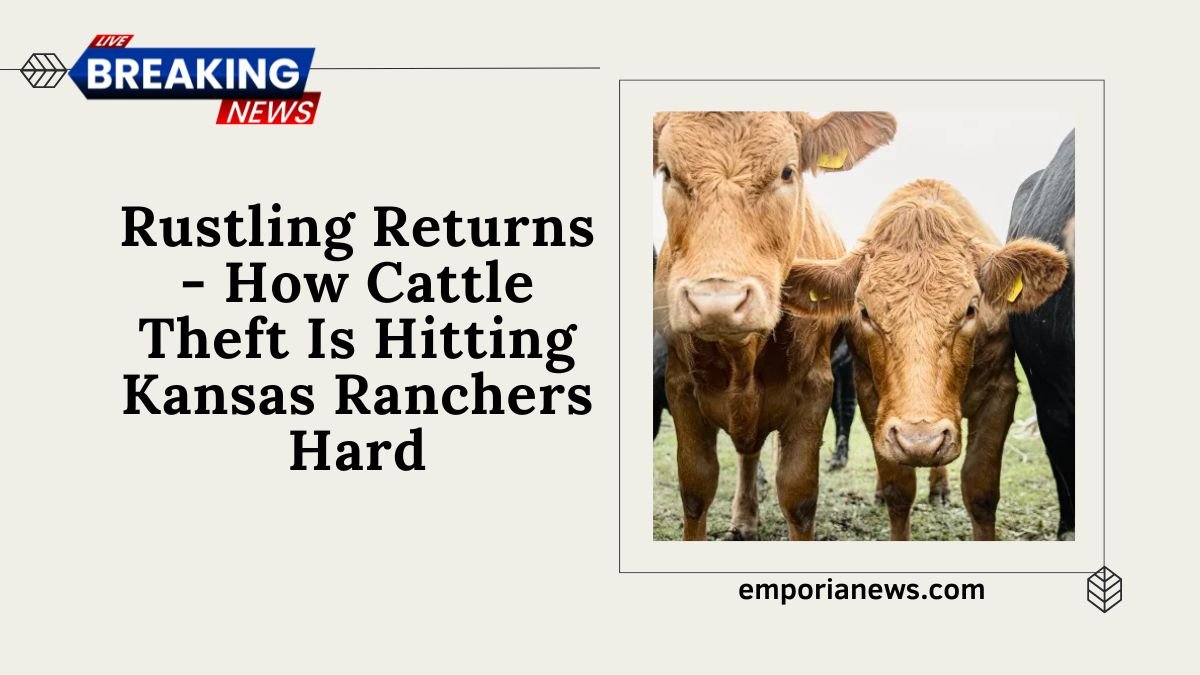Cattle rustling may sound like a relic of the Wild West, but it’s very real—and increasingly costly—for Kansas ranchers in 2025. With record-high cattle prices, criminals are targeting vulnerable operations, reviving old-school theft tactics and modernizing them with sophisticated schemes.
Why Now? High Prices & Lucrative Targets
- Live cattle prices hit all-time highs this year, with feeder cattle climbing approximately +4–5% year‑to‑date.
- Criminals see an “easy payday”: steal one cow, quickly resell it, and profit from minimal risk.
- Scarlett Madinger, VP of comms at KLA, confirms thieves view access to unattended cattle as a financial opportunity.
How Much is Being Taken? Alarming Numbers for 2024–25
| Statistic | Value | Context |
|---|---|---|
| Total losses FY 2024 | $4.3 million | Stolen cattle impacting ranchers financially |
| Internet-related losses in 2024 | $1.3 million | Scams involving online cattle sales |
| Registered Kansas brands | ~18,000 | Only a fraction actively used |
| Active theft cases | 6–20 at a time | Handled by Attorney General’s Livestock Unit |
These figures highlight a multi-pronged threat: traditional theft from pastures and online fraud that duplicates livestock trading.
In-Person Theft: Crime of Opportunity
- Most stolen animals are easily accessible: beef cows and cow–calf pairs.
- Thieves scout routines—church services, feed stores—then strike during predictable windows.
- Simple negligence, like unlocked gates, leads to thefts that load cattle into trailers overnight.
Cyber Rustlers: The New Frontier
- Internet scams involve fake ads—cattle “for sale”—baiting ranchers into wiring money without verifying ownership.
- Once money transfers, the seller vanishes, delivers fewer or inferior animals, or disappears entirely.
- Advisories encourage only paying upon pickup and verifying seller identity directly.
Defense Strategies: Protecting the Herd
1. Permanent Identification
- Brands or hot-iron marks—the gold standard—cannot be removed like ear tags.
- Ear notches also used, but sneaky criminals may alter them post-theft.
2. Frequent Inventory Checks
- Daily headcounts reveal missing cattle quickly, helping law enforcement pinpoint when theft occurred.
3. Fence & Gate Security
- Even portable pens get chained and locked to deter opportunistic thieves.
4. Community Watch
- Ranchers should know their neighbors and report unfamiliar vehicles or activity.
- KDA and KLA reward programs incentivize reporting suspicious behavior.
5. Prompt Reporting
- Contact local sheriff, the Kansas Department of Agriculture’s Division of Animal Health, and the AG’s Livestock Brand Investigation Unit immediately when theft is suspected.
Legal & Support Infrastructures
- Stolen livestock is a felony if value exceeds $1,500.
- Civil suits are possible—to recover stolen animals or monetary damages.
- KLA reward programs offer incentives up to several thousand dollars for tips.
- Multiple enforcement bodies coordinate—county sheriff → KDA → AG’s unit → regional auctions (to flag stolen livestock).
Modern Examples: Theft on the Rise
- Robbed ranches near Thayer, KS, lost nearly 23 black steers (~600 lb each), identified by branding and colored ear tags.
- KLA and KDA reports confirm that young calves and cow‑calf pairs are prime targets due to their resale value.
- In FY 2024, $1.3 million lost through online scams, with ranchers sending funds in good faith before verifying the stock.
Success Stories: How Branding & Vigilance Work
- Ranchers acting quickly, sharing brand and tag info with law enforcement, have recovered as-yet unidentified animals.
- KDA’s Stray/Stolen Livestock Report system helps track suspected animals at sale barns statewide.
Cattle rustling in Kansas is no nostalgic fantasy—it’s an escalating threat to modern ranchers and their families. As livestock values soar, criminals—both physical and online—are netting big. But brands, records, secure fencing, frequent counts, and community coordination remain effective defenses.
To safeguard the heart of their livelihood, Kansas ranchers must embrace old-school methods and modern awareness, leveraging legal protections, brand registries, and technology to fend off rustlers—especially in FY 2025, where every head and every dollar counts.



